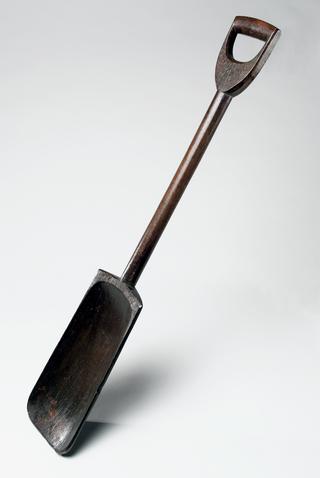
Model of Crosskill's clod-crusher
- Made:
- 1841-1857 in unknown place

Model of Crosskill's clod-crusher, patented in 1841
Rollers were made of wood, stone or iron, the early types being made on the far, with whatever materials were available. They were often weighted to increase their pressure on the soil, one method being a box filled with stones positioned on top of the roller framework. Some rollers were solid and some were in two or more parts; mention of a spiky roller was made during the 18th century. The purpose of the roller, and later was the clodcrusher was to break up the large lumps of sun-dried earth and to assist in the preparation of a fine tilth. It was also used to consolidate the soil around newly-sown seed or young shoots.
Patented in 1841 by Crosskill, this design of clodcrusher was extremely successful. Its serrated wheels, each with a series of sidewasys-projecting teeth, were particularly effective both in pulverising the clods and in consolidating the soil around very young plants. The implement weighed 26cwt. and required 2 or 3 horses to draw it. Road wheels were provided for travelling between fields.
Details
- Category:
- Agricultural Engineering
- Object Number:
- 1857-113
- Materials:
- wood (unidentified), iron and brass (copper, zinc alloy)
- Measurements:
-
overall: 341 mm x 248 mm x 150 mm, 2.734 kg
overall (wheel, laid flat): 10 mm 93 mm, .09 kg
- type:
- clod crusher
- credit:
- Commissioners of Patents




